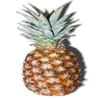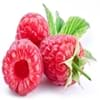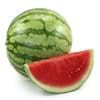Health Benefits
Asthma treatment, Bronchitis treatment, Cancer prevention, Heart care, Increases metabolic rate
Cancer prevention, Gout treatment, Heart care, Regulation of heart rate, Treatment of rheumatism
General Benefits
Anti-inflammatory properties, Controls blood pressure, Digestive aid, Eye care, Healing of wounds, Maintains healthy cholesterol level, Strengthens bones, Treatment of sinusitis, Treatment of common cold
Anti oxidant properties, Controls blood pressure, Cures fever, Digestive aid, Healing of wounds, Helps in weight loss, Strengthens bones
Skin Benefits
Anti-aging benefits, Brightens and lightens complexion, Skin cleansing, Treatment of acne, Treatment of dark spots
Brightens and lightens complexion, Reduces wrinkles, Treatment of acne
Hair Benefits
Prevents hair loss
Protects hair
Allergy Symptoms
Abdominal pains, Itching in tongue and other parts of mouth, Sneezing, Swelling, Tingling sensation in wrist and face, Vomiting, Wheezing
Abnormally rapid heart rate, Anaphylaxis, Breathing difficulty, Hives, Itching, Swallowing difficulties
Side Effects
Causes swollen mouth, Allergic reaction, Diarrhoea, Nausea, Skin rash, Vomiting
Possibly unsafe during pregnancy
Best Time to Eat
Best if taken as a breakfast (or empty stomach), As a snack in the late afternoon, Eat the fresh ones, avoid mixing with any other foods, don't eat after meal., Morning time (before lunch)
Best if taken as a breakfast (or empty stomach), As a snack in the late afternoon, Don't eat after meal, Morning time (before lunch)
Vitamin B5 (Pantothenic Acid)
Vitamin C (Ascorbic Acid)
Vitamin K (Phyllochinone)
Phytosterol
Not Available
Calories in Fresh Fruit with Peel
Not Available
Calories in Fresh Fruit without Peel
Not Available
Calories in Frozen Form
Not Available
Calories in Canned Form
Not Available
Type
Berry, Tropical
Berry
Varieties
Smooth Cayenne, Abacaxi, Red Spanish and Queen
Rovada, Stanza, Red Lake, Junifer and Jonkheer van Tets
Taste
Strong, Sweet, Tart
Sour, Tart
Origin
Central America, South America
Europe
Grows on
Not Available
Trees
Soil Type
Clay, Sandy loam, Well-drained
Moist, Well-drained
Climatic Conditions
Hot, Sunny
Cold
Facts about
- A single pineapple takes 3 years to reach maturation.
- Pineapple is not an apple, but is actually a berry.
- The name is with reference to its resemblance to pine cones.
- Pineapple is sweeter if scales are more.
- The albino version of red currants known as white currants, are often sold as different fruit.
- Red currant tea is healthy substitute for coffee.
- There are more than 150 varieties of red currants.
Top Producer
Costa Rica
Russia
Other Countries
Brazil, India, Philippines, Thailand
Belgium, France, Germany, Ireland, Italy, Netherlands, Poland, Portugal, Scotland, Spain, Sweden, United Kingdom
Top Importer
United States of America
Germany
Top Exporter
Costa Rica
Russia
Botanical Name
Ananas comosus
Ribes rubrum
Synonym
Ananas sativus
Not Available
Subkingdom
Tracheobionta
Tracheobionta
Division
Magnoliophyta
Magnoliophyta
Class
Liliopsida
Magnoliopsida
Subclass
Commelinidae
Rosidae
Order
Poales
Saxifragales
Family
Bromeliaceae
Grossulariaceae
Species
A. comosus
R. rubrum
Generic Group
Pineapple
Saxifrage
Difference Between Pineapple and Red Currant
We might think that Pineapple and Red Currant are similar with respect to nutritional value and health benefits. But the nutrient content of both fruits is different. Pineapple and Red Currant Facts such as their taste, shape, color, and size are also distinct. The difference between Pineapple and Red Currant is explained here.
The amount of calories in 100 gm of fresh Pineapple and Red Currant with peel is Not Available and 56.00 kcal and the amount of calories without peel is 50.00 kcal and Not Available respectively. Thus, Pineapple and Red Currant belong to Low Calorie Fruits and Low Calorie Fruits category.These fruits might or might not differ with respect to their scientific classification. The order of Pineapple and Red Currant is Poales and Saxifragales respectively. Pineapple belongs to Bromeliaceae family and Red Currant belongs to Grossulariaceae family. Pineapple belongs to Ananas genus of A. comosus species and Red Currant belongs to Ribes genus of R. rubrum species. Beings plants, both fruits belong to Plantae Kingdom.









